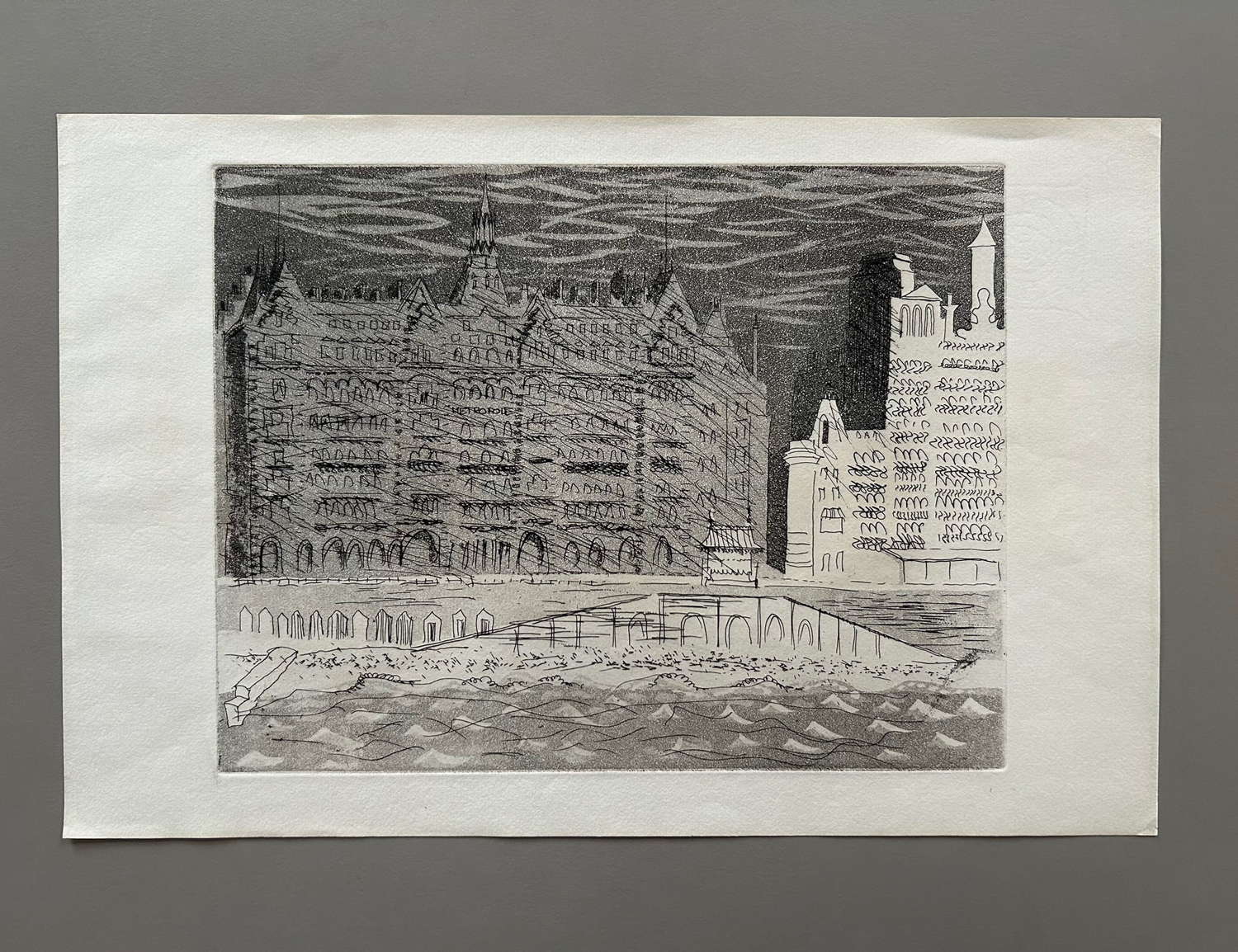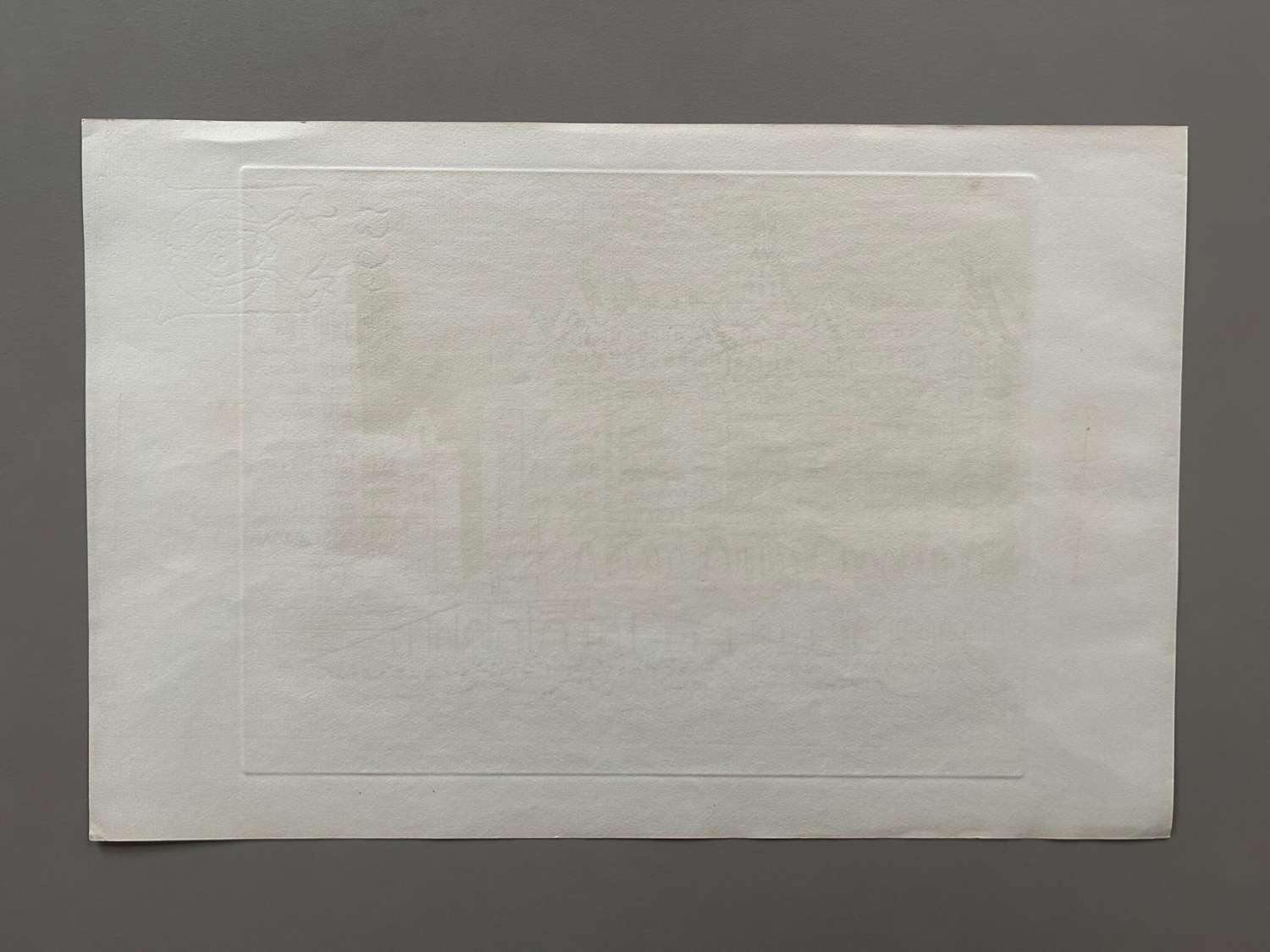
Marlborough Antiques & Interiors |
Tel: 07717101616 Email: enquiries@marlboroughantiques.com Web site: https://www.marlboroughantiques.com/ |
|
Code: 11906
Aquatint entitled The Metropole Hotel from John Piper’s Brighton Aquatints
The Metropole and the Grand are two enormous hotels that change the whole nature of the part of Brighton between the two piers. In the words of Piper, ‘But it is only a change from jollity to frivolity.’
Old prints hung in the Pavilion show the Regency Houses that were swept away to make room for these two massive hotels.
The Metropole, (which occupies the centre place in this aquatint with the Grand disappearing out of the picture on the right) is dark, lurid red, with fanciful porches,balconies, roofs and chimneys, with a good deal of iron in its construction.
Piper says, ‘To see it best, go along the pier and look back across the strip of the sea. From here, on the right day big waves would be washing away from you towards the Metropole as if they intend to swamp it. A heavy shower may just be over, and dark clouds may hang behind to provide a sombre backcloth for this extraordinary inanimate stage turn.’
This aquatint is from the edition of 195 uncoloured prints out of the total edition of 250.
Print: Length 38cm; Width 25cm and Image: Length 27.5cm; Width 21cm
Condition: Very good for a print published in 1939 and is devoid of any discernible
blemishes.
A must for an aficionado of John Piper’s prints.
A copy of the front page of the publication signed by John Piper will be provided to the purchaser.
Brighton Aquatints is John Piper’s only fully realized example of an ‘artist’s book’ and with its unique use of the aquatint medium throughout, it is pivotal work of its time.
It was published in 1939 by Gerald Duckworth, and through its aquatints it celebrates some of Brighton’s most iconic architecture: its Regency squares with their stuccoed and balconied houses; the Royal Pavilion in all its extravagance, and the filigree beauty of the West Pier and Victorian churches.
Out of the original edition of 250, 55 special copies were hand-coloured, mostly by Piper himself, but also with the help of his friend the poet John Betjeman, who first suggested the idea for the book.
Running throughout John Piper’s extraordinarily productive artistic life, spanning six decades, was a creative tension between a positive
commitment to the modern and a profound desire to resuscitate and reinterpret certain English artistic traditions of the past. During his unusually fecund artistic career, Piper was a prolific painter, innovative and skilled printmaker, creator of iconic stained glass images, designer of theatrical and opera costumes and sets, pottery designer, maker of fabrics, tapestries and pyrotechnics, book illustrator and photographer.
Piper’s work was essentially a celebration of British landscapes and architecture. His favourite motif was decaying and devastated buildings.
Piper’s handling of colour, texture and perspective heightened the visual appeal of his romantic topography. Piper was a visual historian with a mission, fired by boundless energy and enthusiasm, a journey that began with his first public offering in 1939, Brighton Aquatints. His artistic legacy to Britain and her people that ranged over a variety of subjects and themes depicted a unique blend of versatile artistic imagination, technical skills, innovative prowess and egregious craftsmanship.
Piper will best be remembered for his paintings and etchings of our churches, castles and stately homes. As long as English cultural heritage survives as a distinct entity in our world that is getting increasingly globalised, we believe there will be a place in it for John Piper, this most English of artists.

